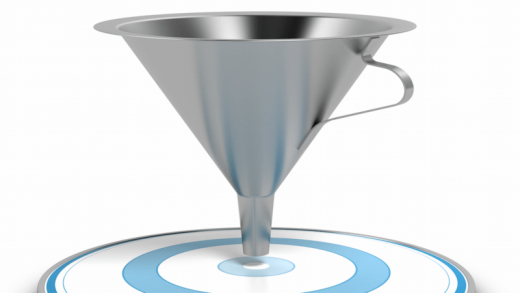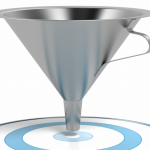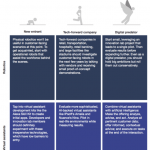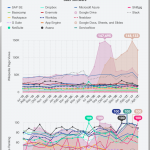Maybe the marketing funnel is dead, too — and here’s what can replace it
Is it time to say goodbye to the venerable marketing funnel? Not just yet. But columnist Justin Dunham believes marketers need to think about what a user is trying to accomplish, not where they are in the funnel.
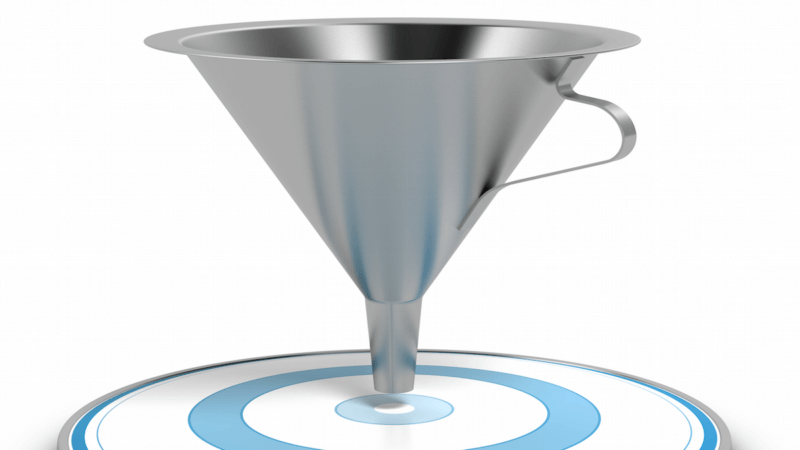 In my last column, I explained why you should probably stop thinking about marketing in terms of campaigns. It used to be that you created marketing collateral and could never touch it again — but digital marketing lets us constantly iterate and improve what’s out there. And if we can iterate, we should, since improving what’s working is much more efficient than constantly starting from scratch.
In my last column, I explained why you should probably stop thinking about marketing in terms of campaigns. It used to be that you created marketing collateral and could never touch it again — but digital marketing lets us constantly iterate and improve what’s out there. And if we can iterate, we should, since improving what’s working is much more efficient than constantly starting from scratch.
With digital marketing, we can be more iterative and flexible in our marketing. But there’s a flip side to this — our prospects and customers can also be more flexible in the way that they learn about what we offer and why they should be interested.
The marketing funnel isn’t a static journey anymore, if it ever was. We need to pay more attention to exactly what our prospects are doing, when and why.
The ‘marketing funnel’ often… isn’t
We’re all familiar with the concept of the “marketing funnel.” Originally developed in 1898, it describes a “journey from the moment a brand or product attracted consumer attention to the point of action or purchase.” Here’s what they show you in Marketing 101:

And a more modern version might look something like this:

But increasingly, the lines between these different stages are getting blurry. And marketers have less and less control over when, where and in what order they happen.
- The power of Google means that by the time a prospect visits your website, there’s a good chance they already know a lot about you and what you offer.
- SaaS makes it easy to trial — so someone who signs up for your product might still be relatively early in their buying cycle.
- On the other hand, some of your customers will go through the entire funnel in one day.
- Then again, some of your most passionate users and promoters won’t pay you a dime — especially if you’re open source, or your SaaS (software as a service) has a free tier.
So, what’s a digital marketer to do?
Intent, not stages
There’s a classic web design and usability book called “Don’t Make Me Think,” written by Steve Krug. He talks about how a web producer’s job is to make it as simple as possible for a site visitor to find the information they need or accomplish the task they’re interested in. When someone’s on your site, they don’t care about your neat JavaScript or your clever prose. They care about accomplishing whatever task they have at hand, and then returning to their lives.
That’s true of everything we produce. Nobody cares about your product — they care about what it does for them. And your visitors really don’t care about your marketing; they care about how it helps them get closer to achieving their goals.
Fortunately for us, digital marketing makes it a lot easier to give our prospects what they care about. We have far more data on behavior, and the profiles of our users, then we ever did before. We can tell what company a user works at, how they found us, and what they’re interested in — without them filling out a single form:
- AdWords tells us what questions they’re asking Google.
- Social networks give us huge amounts of data about demographics, behavior, job function and other things your prospects are interested in.
- In enterprise software (my specialty), account-based marketing tools can tell us where our prospects work, and lots of information about the software they’re already using.
Computers are getting better and better at inferring information without needing to ask for it, and we should take advantage of all of that capability to offer our users what they need at that exact moment, without thinking about where they are in our vision of the marketing funnel.
So as a marketer, think about what your individual user is trying to accomplish, not where they are in the funnel.
Intent in practice
This all sounds kind of interesting and maybe useful — but how do you actually implement this advice? Let’s look at a few specific examples.
Website
The typical approach to a website is to categorize each page on it in as if it were a linear flow — people who don’t know about you hit your home page first, whereas someone on your product page is presumably “further down the funnel,” so you show them different calls to action.
A better approach is to use personalization. When someone returns to your home page after a visit or two, they should probably see a relevant offer instead of your generic value proposition. But if it’s their first visit to your site ever, your home page stays the same. Or, if someone scrolls all the way down your product page, it might be time — only then — to have a sales rep reach out, rather than having a sales rep reach out the first time the prospect fills out a form.
Nurture tracks
Most people think of nurture tracks as a single linear flow. But if you can avoid it, don’t send people just a single drip program with a sequence of messages. Instead, lots of marketing automation systems provide a way to create nurture “streams” that prospects can get into, or out of, depending on where you’re seeing them engage on your site.
You can build these streams with relevant content — let’s say, all of your blog posts with generic advice — so that they go on pretty much forever and help your prospect see all the information you have to offer on that topic. When a user behaves in a way that indicates more interest, such as visiting your site again, move them into a different track that’s more focused on what you offer.
Product tours
Lots of products offer “tours” that force a user to click through each piece of functionality before they can actually get to work. In a sense, you’re making your users go through a “micro-funnel” so that they’re more likely to adopt your product.
Focus instead on really high-quality design, and on user testing, so that you don’t have to use a product tour to make things usable. That’s another way of meeting your user where they are.
Your customer wants a better version of themselves
Is the marketing funnel going away, too? As I said in my last column about the marketing campaign — of course not. It will be with us for a long, long time. And it remains extremely useful as a theoretical model of how our users make decisions.
But those two words are important: Theoretical model.
Because increasingly, we have the tools to understand users’ intent individually, rather than as abstract entities. And when we market to users’ intent, we can understand what they really want — and how our product can help them get there.
Some opinions expressed in this article may be those of a guest author and not necessarily Marketing Land. Staff authors are listed here.
Marketing Land – Internet Marketing News, Strategies & Tips
(15)

